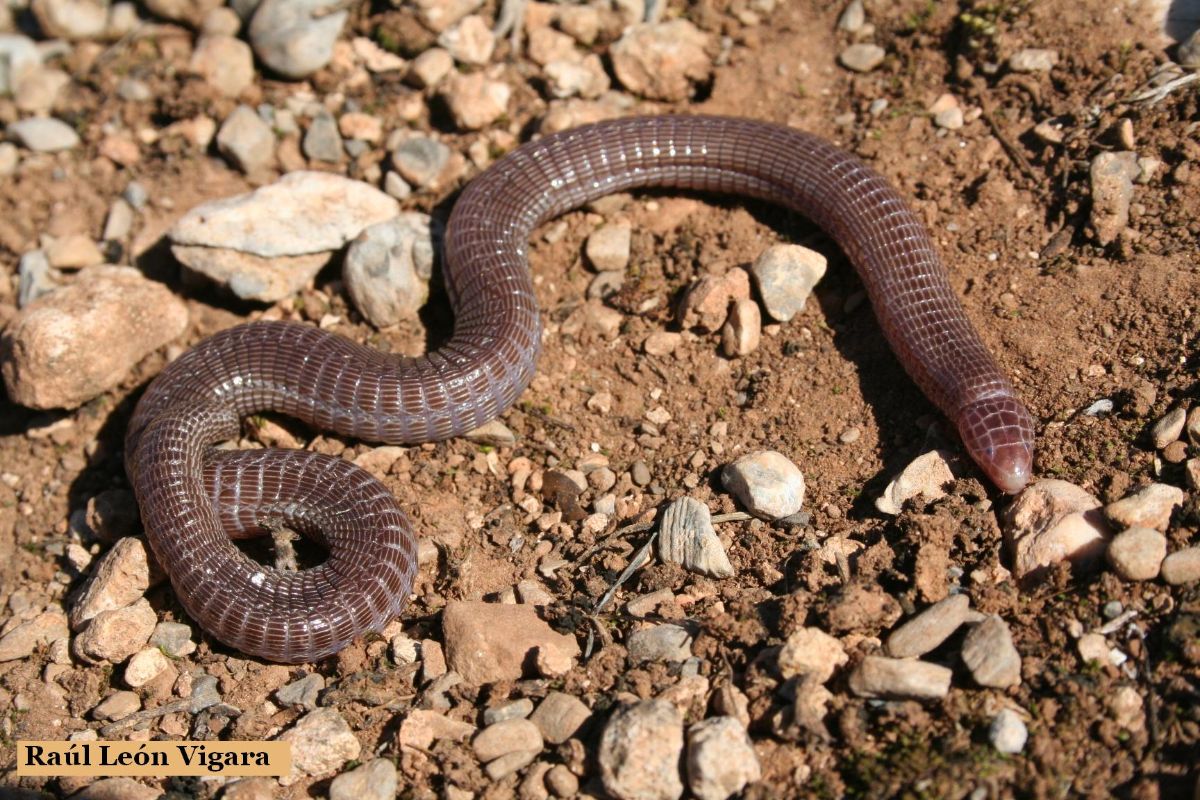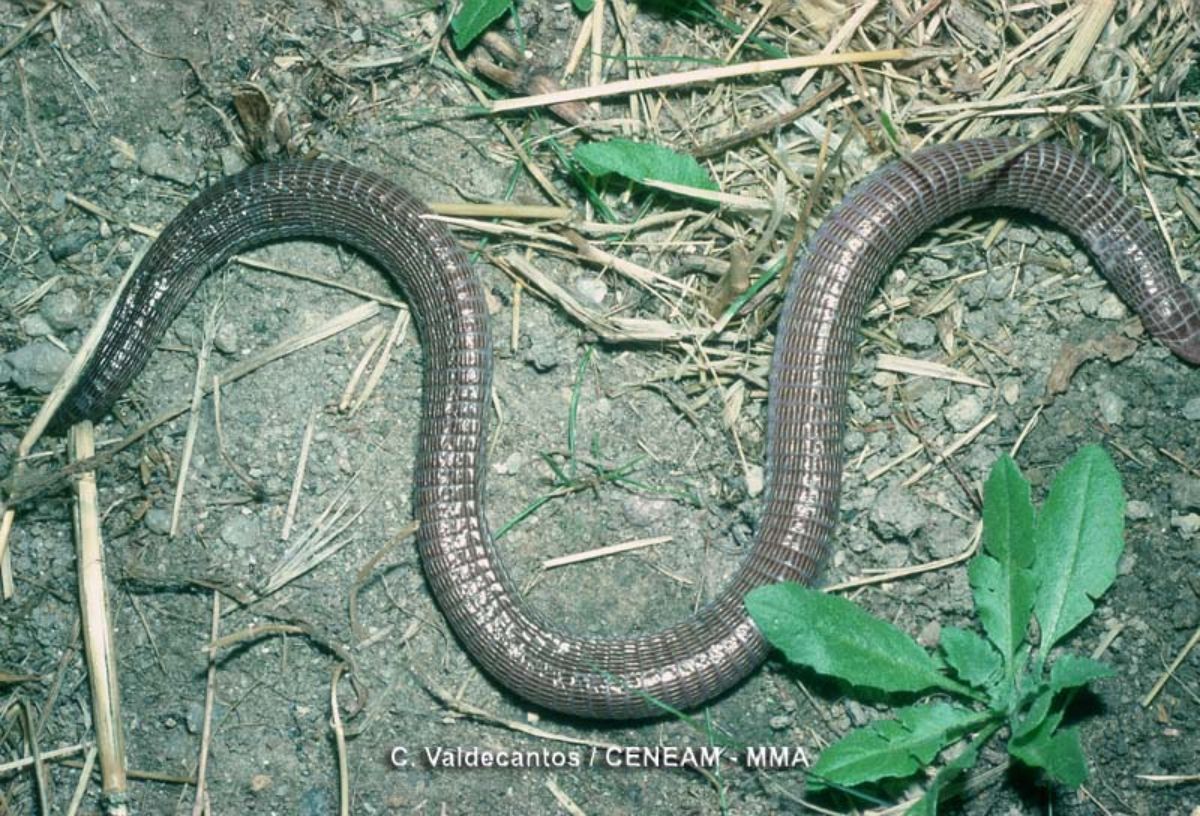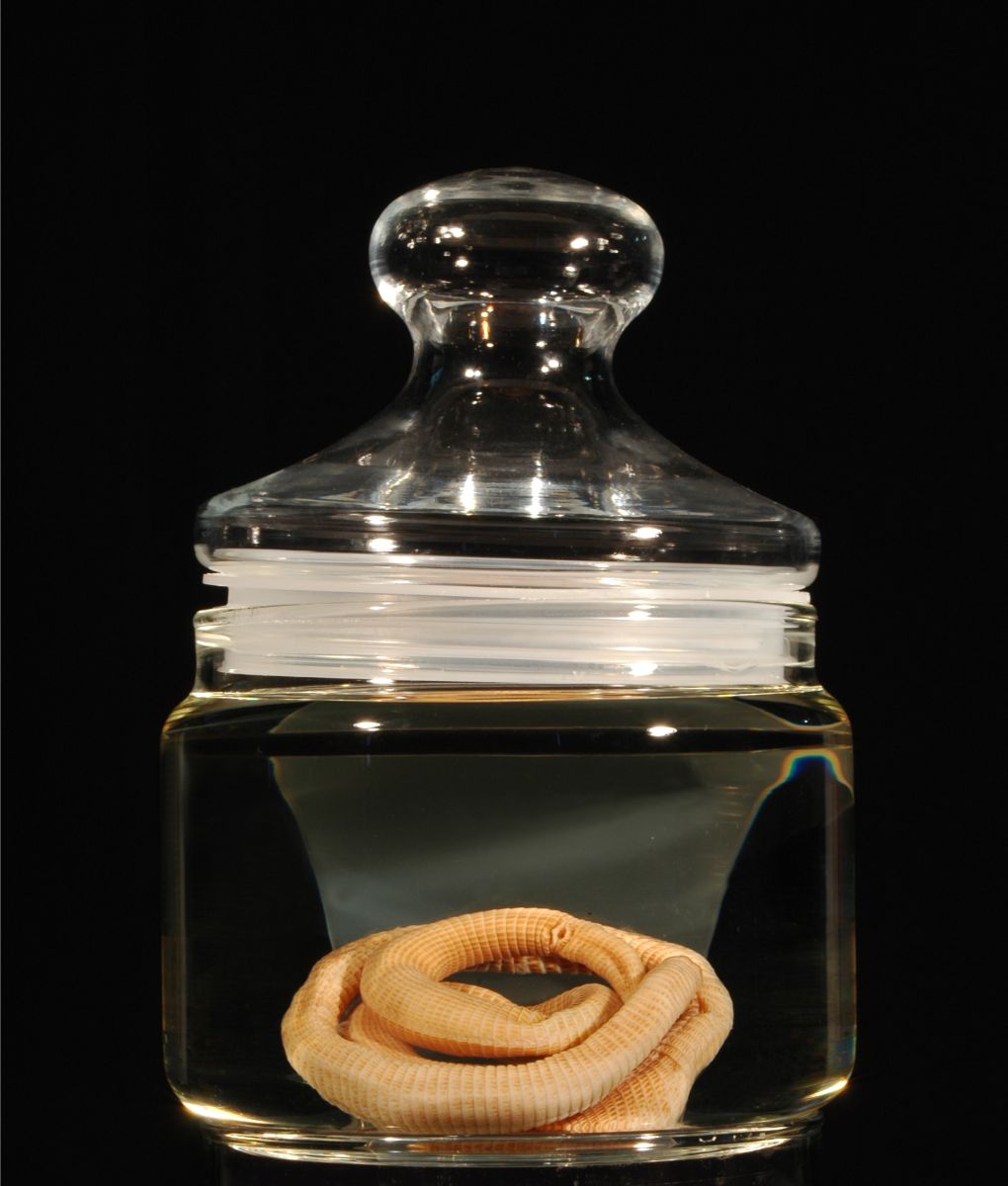Name
Blanus cinereus
Iberian worm lizard
Framing
Phylum: Chordata
Subphylum: Vertebrata
Class: Reptilia
Order: Squamata
Suborder: Amphisbaenia
Family: Amphisbaenidae
Genus: Blanus
Species: cinereus
Habitat
Underground habits, generally in soils that are not very compact in areas with a Mediterranean climate. Its habits are entirely subterranean, although relatively superficial, and it is very rare to see it on the surface.
Feeding
Predator. Generally feeds on insect larvae, ants, beetles, spiders, mealybugs and pseudoscorpions, exceptionally even capturing lizards.
Distribution
It is distributed exclusively on the Iberian Peninsula and is considered an Iberian endemism, as the North African populations have been described as new species, although knowledge of its distribution is scarce, due to the cryptic and subterranean nature of this species.
Conservation status
Least Concern (LC), with stable population trend
Additional information
Free life. Solitary. Worm-like in appearance, with cylindrical body, head with rounded snout and inconspicuous eyes. Rows of scales of almost similar size arranged regularly both dorsally and ventrally, giving it a ringed appearance.
Additional information
Bibliography
- Albert, E. M. & Fernández, A. (2009). Evidence of cryptic speciation in a fossorial reptile: description of a new species of Blanus (Squamata: Amphisbaenia: Blanidae) from the Iberian Peninsula. Zootaxa, 2234, 56-68.
- Albert, E. M., Zardoya, R. & García-París, M. (2007). Phylogeographical and speciation patterns in subterranean worm lizards of the genus Blanus (Amphisbaenia: Blanidae). Molecular Ecology, 16 (7), 1519-1531.
- Barbadillo, L. J., Martínez-Solano, I. & Valdemoro, D. (1998). Blanus cinereus (Iberian amphisbaenian). Diet. Herpetol. Rev., 29, 236.
Gil, M. J. (1997). Blanus cinereus (Vandelli, 1797). Culebrilla ciega. En: Distribución y Biogeografía de los Anfibios y Reptiles en España y Portugal (pp.184-186). Pleguezuelos, J. M. (Ed.). Asociación Herpetológica Española, Granada.
I.C.O.N.A. (1988). Lista roja de los vertebrados de España. Instituto Nacional para la Conservación de la Naturaleza. Ministerio de Agricultura, Pesca y Alimentación, Madrid.
López, P. (1993). Adaptaciones ecológicas a la vida fosorial de la culebrilla ciega (Blanus cinereus). Tesis Doctoral. Universidad Complutense, Madrid.
López, P. & Martin, J. (1992). Un reptil de vida subterranea: la culebrilla ciega. Quercus, 79, 18-25.
Maitland, D. P. & Hart, A. G. (2008). A fluorescent vertebrate: the Iberian worm-lizard Blanus cinereus (Amphisbaenidae). Herpetological Review, 39 (1), 50-51.
Pleguezuelos, J. M., Sá-Sousa, P., Pérez-Mellado, V., Márquez, R. & Martínez-Solano, I. (2009). Blanus cinereus. En: IUCN Red List of Threatened Species. Version 2009.1.
Salvador, A. & Pleguezuelos, J. M. (2002). Reptiles españoles. Identificación, historia natural y distribución. Esfagnos, Talavera de la Reina, Toledo.




